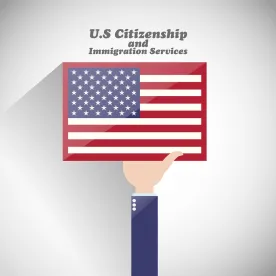USCIS announced that effective May 4, 2022, certain categories of Employment Authorization Document (“EAD”) applicants will be eligible for an additional extension of automatic work authorization, beyond that to which they are already entitled.
Background: Through a series of unfortunate events, USCIS processing timelines across the board have taken a hit over the past couple of years. Much in the same way that COVID-19 impacted the rest of the world’s workforce, during 2020 and 2021, the government faced hiring freezes, furlough threats, workforce attrition, and severely reduced capacity for processing cases through traditional means (e.g. facing the impacts of remote work). At the same time, foreign nationals present in the United States similarly faced various job changes and severe restrictions on international travel that were just some of the factors contributing to a necessity for increased filings through USCIS.
In spite of existing stop-gap measures, the severe delays in processing EAD applications have resulted in work stoppages and unemployment for many applicants and U.S. businesses at a critical time for our nation’s economic recovery. As of now, for example, the “estimated time range” published on the government’s processing times website for an EAD to be issued to someone with a filed and pending adjustment of status application at the Texas Service Center is 14 to 18.5 months. In January 2017, the Department of Homeland Security eliminated the regulatory requirement that EADs should be adjudicated within 90 days and implemented a 180-day automatic extension following expiration for certain classes of EAD applicants, which unfortunately is no longer sufficient to provide relief.
The new, temporary final rule: For EAD applicants in a category that is already eligible for an automatic extension of work authorization based on timely filed application, in addition to the 180 day automatic extension of work authorization, applicants will be eligible for a further 360 days, for a total of up to 540 days beyond the expiration of a facially-valid EAD. This temporary rule and extended period of automatic authorization will remain in place for 18 months after publication.
To qualify, the applicant must already hold an EAD in one of the eligible categories and must submit the extension application prior to expiration under a matching category (with the exception of certain TPS beneficiaries/pending applicants) prior to October 27, 2023, at which time the rule will revert to allowing only for a 180-day automatic extension of work authorization. The rule is also retroactive, to the extent that anyone with a timely-filed and pending EAD extension who is qualified for, and has already surpassed, the 180-day automatic extension period but who remains within 540 days past their EAD expiration may immediately return to work. The automatic extension of work authorization ends either at the time a final decision is made on the renewal application or at the end of the 540-day period, whichever comes first.
An unpublished version of the rule is available for inspection through the Federal Register and is scheduled for release on May 4, 2022.
Shaena M. Rowland contributed to this article.



 />i
/>i

